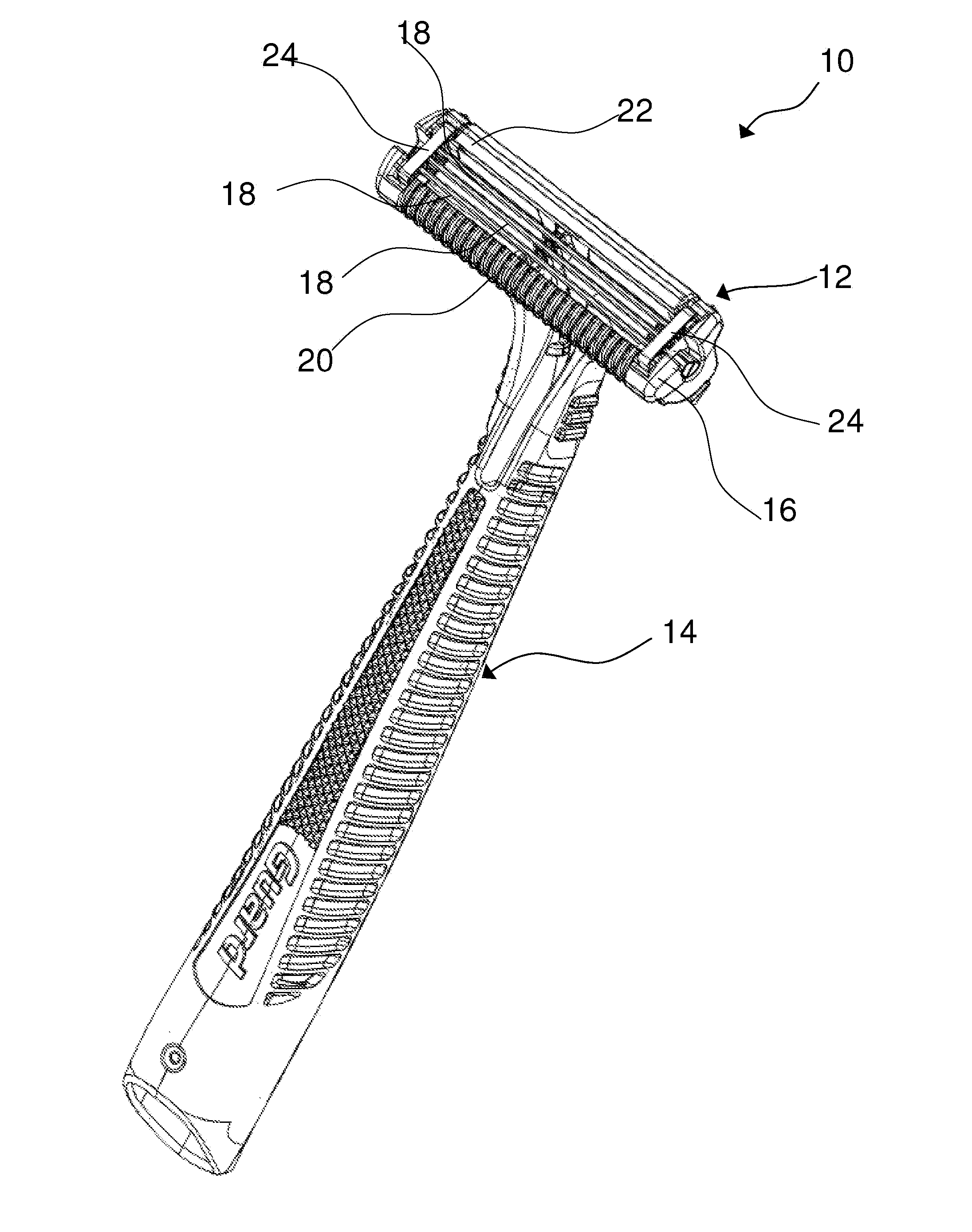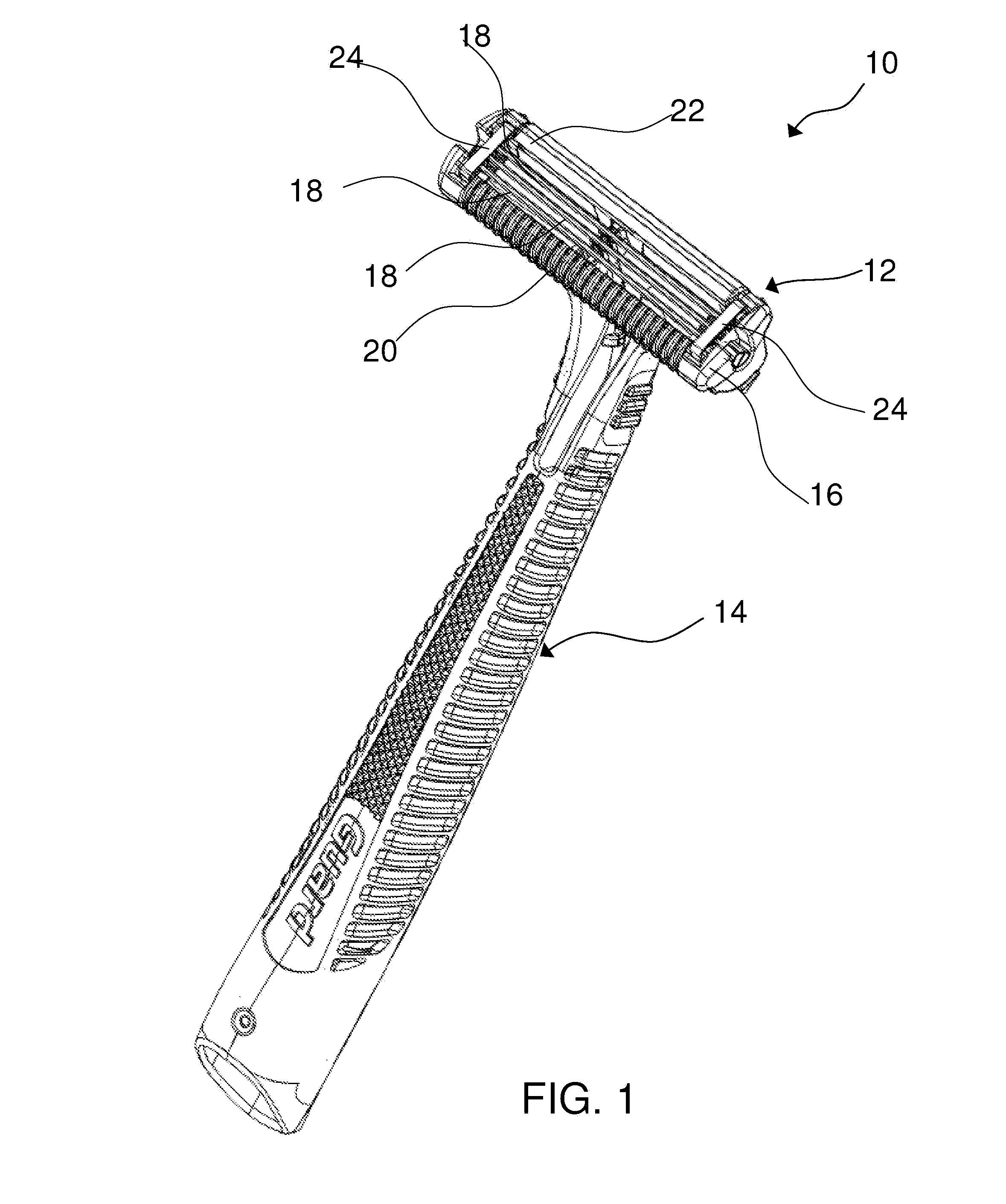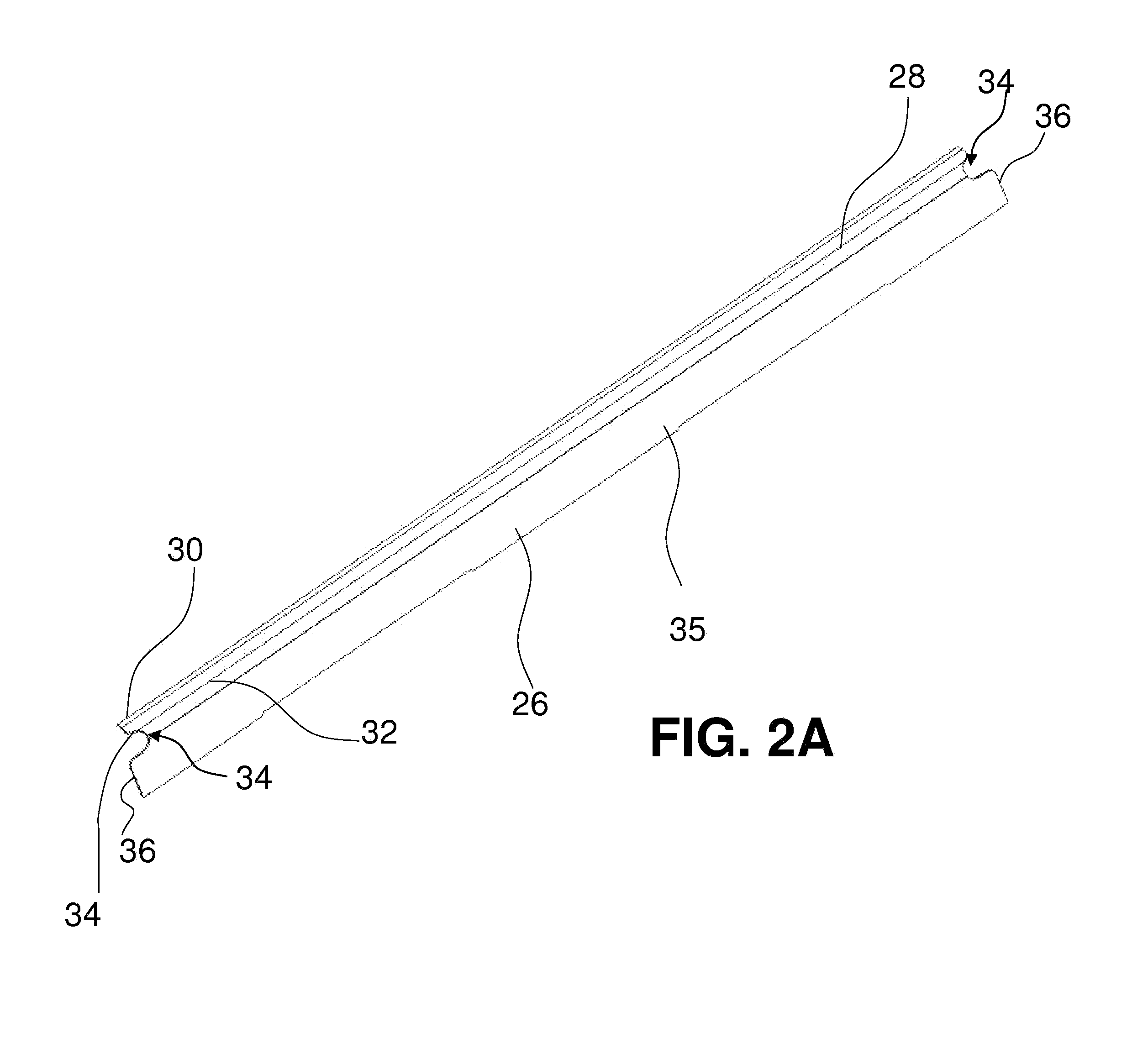Bent razor blades and manufacturing thereof
a razor blade and blade technology, applied in the field of razor blades, can solve the problems of blade failure during manufacturing or even during shaving, less skin comfort, and more skin bulge between cutting edges,
- Summary
- Abstract
- Description
- Claims
- Application Information
AI Technical Summary
Benefits of technology
Problems solved by technology
Method used
Image
Examples
Embodiment Construction
[0015]Referring to FIG. 1, one embodiment of the present disclosure is shown illustrating a shaving razor 10 having a shaving cartridge 12 mounted to a shaving razor handle 14. The shaving cartridge 12 may be pivotably (i.e., rotation of the cartridge 12 about an axis relative to the shaving razor handle 14) and / or detachably engaged to the shaving razor handle 14. The shaving cartridge 12 may include a housing 16 dimensioned to receive at least one bent blade 18. Although three blades 18 are shown, the housing 16 may have more or fewer blades 18 depending on the desired performance and cost of the shaving razor 10. The housing 16 may have a guard 20 in front of the blades 18 and a cap 22 behind the blades 18. The guard 20 and the cap 22 may aid in establishing a proper shaving geometry (e.g., blade exposure) for the shaving cartridge 12.
[0016]The blades 18 may be mounted to the housing 16 and secured in at least one direction by at least one clip 24. The blades 18 may be rigidly fi...
PUM
| Property | Measurement | Unit |
|---|---|---|
| roughness | aaaaa | aaaaa |
| roughness | aaaaa | aaaaa |
| roughness | aaaaa | aaaaa |
Abstract
Description
Claims
Application Information
 Login to View More
Login to View More - R&D
- Intellectual Property
- Life Sciences
- Materials
- Tech Scout
- Unparalleled Data Quality
- Higher Quality Content
- 60% Fewer Hallucinations
Browse by: Latest US Patents, China's latest patents, Technical Efficacy Thesaurus, Application Domain, Technology Topic, Popular Technical Reports.
© 2025 PatSnap. All rights reserved.Legal|Privacy policy|Modern Slavery Act Transparency Statement|Sitemap|About US| Contact US: help@patsnap.com



